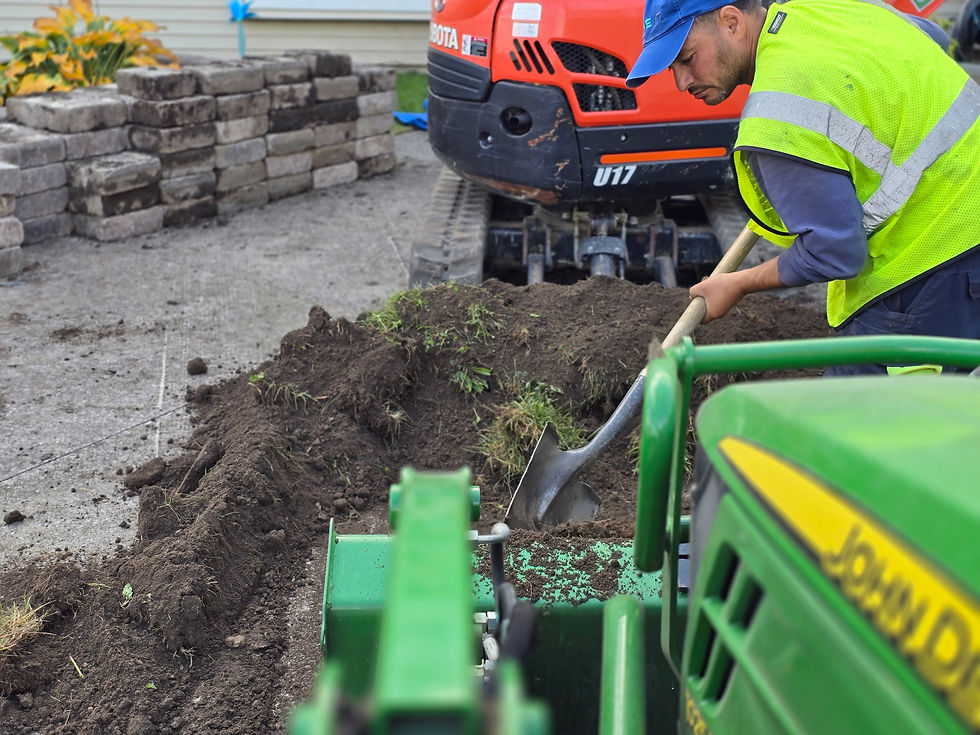The Journey to a Revitalized Lawn: Understanding the Process of Topdressing and Lawn Rehabilitation
- Lawn Guru
- Apr 30, 2024
- 2 min read

The Journey to a Revitalized Lawn: Understanding the Process of Topdressing and Lawn Rehabilitation
Revitalizing a lawn is much like restoring a cherished piece of art. It requires patience, the right techniques, and a comprehensive understanding of the processes involved. For homeowners looking to breathe new life into their lawns, topdressing combined with aeration, overseeding, and proper lawn care is a sustainable approach. However, it's important to set realistic expectations, as the transformation doesn’t happen overnight. Here, we delve into how topdressing works, why it's a gradual process, and the critical steps involved in achieving a lush, healthy lawn.
What is Topdressing?
Topdressing is the practice of applying a layer of mixed soil, compost, and sand over the surface of your lawn. This technique serves multiple purposes: it helps smooth out the surface, improves soil quality, enhances water retention and drainage, and reduces thatch buildup. When combined with aeration—where small plugs of soil are removed to increase oxygen, water, and nutrient flow to the roots—it sets the stage for a lawn’s revival.
The Role of Overseeding
After aerating and topdressing, overseeding is typically the next step. This involves spreading a high-quality, certified seed mix across the lawn to introduce resilient grass varieties. These new grasses will fill in bare patches and integrate with the existing turf to create a denser, more vibrant lawn. However, successful germination hinges on several factors, not least the level of care provided after planting.
The Importance of Watering
Watering is perhaps the most critical factor in the germination of new seeds. Without adequate moisture, seeds cannot sprout. After overseeding, it's crucial to keep the lawn consistently moist but not waterlogged. This usually means watering lightly but frequently until the seeds have fully germinated and the young grass has established itself.
Understanding Soil Health and Lawn Damage
Many lawns suffer from underlying issues like poor soil health, which can take years to manifest and just as long to correct. Compaction, nutrient deficiencies, and pH imbalances make it hard for grass to thrive. That’s why topdressing with a nutrient-rich mix is vital, as it gradually improves the soil’s condition. However, the improvement is incremental. Initial results might not be dramatic, especially if the original soil is in poor condition or if the lawn isn’t watered properly.
Continuous Care: More Than Just a One-Time Fix
Lawn rehabilitation is an ongoing process. Regular overseeding helps maintain a dense turf that can outcompete weeds naturally. Applying organic fertilizers nourishes the soil and grass without the harsh effects of chemicals, promoting a healthy ecosystem within your lawn. Additionally, homeowners should establish routine weeding practices to keep invasive plants at bay.
Conclusion: Patience and Persistence
Restoring a lawn through topdressing, aerating, and overseeding is a commitment to its long-term health and beauty. It’s important for homeowners to understand that this is not a quick fix but a gradual improvement. Lawn damage takes years to develop and likewise, the recovery process is gradual. Regular maintenance, proper watering, and ongoing soil care are essential to achieving and sustaining a vibrant lawn.
By setting realistic expectations and committing to the continuous care of their lawn, homeowners can gradually transform their turf into a lush, healthy, and sustainable landscape.







Comments